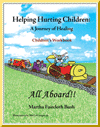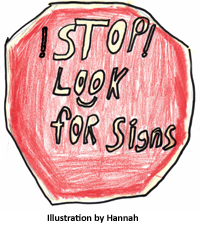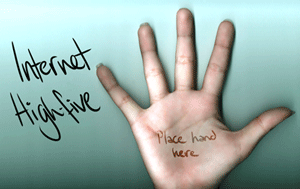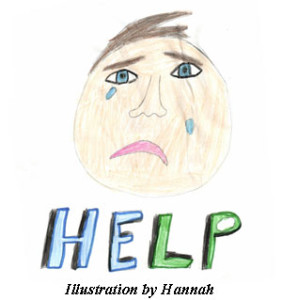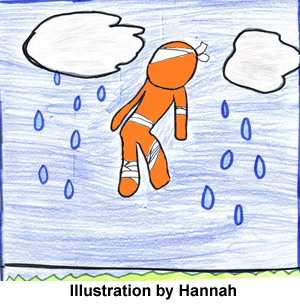 I was asked to teach classes on The Grieving Process for adults at my church by the late Melba Berkhimer, co-pastor of Community Church, Orange, Texas. The three month period set aside for teaching the class turned into a ten-year journey of meeting weekly with hurting adults.
I was asked to teach classes on The Grieving Process for adults at my church by the late Melba Berkhimer, co-pastor of Community Church, Orange, Texas. The three month period set aside for teaching the class turned into a ten-year journey of meeting weekly with hurting adults.
Throughout the years of teaching adults, I began to see a pattern emerge from women and men who came into the class to grieve through a current loss. I witnessed them come to the realization that, not only did they need healing from a current loss, but they also realized some of their childhood hurts had not been resolved from long years ago.
With that discovery, I began to see the importance of building a foundation for children at an early stage in life to help them cope with losses. As I began researching grief in children in an effort to write a study course for my church, I came across a book, entitled Recovering from Losses in Life, by H. Norman Wright. Mr. Wright stated:
- Sometimes adults, unintentionally, get caught up in their own pain and they fail to recognize that their child is also hurting.
- Often times, a child’s pain is overlooked because children do not express their pain in ways adults recognize.
- Probably the #1 reason children are overlooked during times of loss is because the primary adult in the child’s life just simply doesn’t know how to help the child.
Point #3 by Mr. Wright set the wheels of my passion for helping hurting children on fire. And so, with encouragement from my daughter, Heather Frierson, founder and editor-in-chief of Created Woman, my passion for children expanded beyond the walls of my local church.
I became determined to put into the hands of parents, grandparents, children’s ministers, school officials, lay counselors, and any caring adult a hands-on tool to implement the fundamental principles needed in helping a child find healing from the emotional scars of losses.
Thus, Helping Hurting Children: A Journey of Healing was birthed.
This past year I have met with you weekly blogging on how you can help hurting children.
And now, my attention turns to you, the adult. As Mr. Wright stated one of the reasons why children are overlooked in a loss, is the adults in a child’s life gets caught up in their own pain and they fail to recognize that their child is also hurting. And so, for the next few weeks, I invite you to go along with me on a journey of Helping Adults grieve through losses.
I think it is only fitting to begin this journey with my own story of grieving losses that started many years ago in my young adult life. See if you can relate to my story.
“God,” I cried out, “if you will do something about this situation in my life, then I will accept you as my Savior and serve you for the rest of my life!” But God was silent!
“Where are you, don’t you care about me?” I cried out in anguish. Still, God was silent. It became clear that God wasn’t interested in bargaining and cutting a deal with me.
Finally one day in desperation, I retreated to my bedroom and took my Bible out of my nightstand drawer. I had no idea where to start reading; after all, it had been in the drawer for years, untouched. I opened it at random, and with my eyes closed, ran my finger down the page and stopped at a certain point.
My thinking was that wherever my finger was pointing, this verse would be the answer to my current situation. Certainly I could get this problem over with quickly and move on with my life.
When I opened my eyes to read, my finger was pointing to Isaiah 1:5.
“Why should ye be stricken anymore? Ye will revolt (rebel) more and more. The whole head is sick, and the whole heart faint. From the sole of the foot even unto the head, there is no soundness in it; but wounds, and bruises, and putrefying sores: they have not been closed, (healed) neither bound up, neither mollified with ointment.”
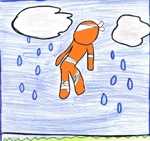 Not exactly what I had thought I would find; yet in my heart I knew that this was a picture of me. From the soles of my feet even unto my head, there was no soundness in it, just wounds, bruises, and sores that had not been healed, just like the scripture had so pointedly said.
Not exactly what I had thought I would find; yet in my heart I knew that this was a picture of me. From the soles of my feet even unto my head, there was no soundness in it, just wounds, bruises, and sores that had not been healed, just like the scripture had so pointedly said.
I had tried to ignore them for years by telling myself, “I’m okay. It’s really not all that bad!” But they had a way of continuing to stick, prick, and agitate me. And yes, I knew that I was rebelling, and not serving God. What a picture this scripture had painted of me!
Shortly thereafter, I accepted Jesus Christ as my Savior. “Surely, I thought, all those wounds, bruises, and sores will now ‘go away’ and quit disrupting my life with all their annoying features.” However, just as Jesus had not accepted my plea bargain to help me while I continued to do my own thing, it appeared now as though there was a second step He wanted me to take the next step — “stop running from my problems!”
Quite to my surprise, my day of reckoning came one Sunday morning as I was getting dressed for church. Coming from the TV, I heard a minister saying, “The title of my sermon this morning is “I’ve Made Up My Mind.” The rest of the sermon did not register with me at all. However, the title got my attention and something inside me clicked. I made up my mind at that moment to do something about my wounds, and made an appointment with my pastor for the following day.
As our conversation began, I acknowledged for the first time in my life that I was psychologically, physically, emotionally, and spiritually sick. Then for the next several hours, I began going back down a muddy road I had already been down before recalling events and uncovering wounds that had held me captive for years. Three hours later when I emerged from his office, I knew that I was embarking upon a new course in life. Where it was leading me, I didn’t know; but there was one thing that I was determined to do and that was to “come back up that muddy road, put the past behind me, and press forward.”
It’s been over 30 years now since I began my journey toward freedom. Those past wounds, bruises, and sores are only a faint memory because of the healing that Jesus has done in my life.
Therefore it is my desire to help others in their plight toward healing. It is my prayer that, as we meet together each week, my writings will help you to:
- Identify the wounds, the bruises, and the putrefying sores, that have caused pain in your lives.
- Experience the hurt, feel the emotion, and accept the Lord’s comfort in the mist of your pain.
- The final purpose for all of us is to be able to fulfill the words of Paul in II. Cor. 1:3-4:
OUT OF THE COMFORT GOD HAS COMFORTED US, MAY WE GO FORTH AND COMFORT OTHERS. (Paraphrased)
Have you made up your mind to begin your journey toward healing and wholeness? If so, join Hannah (my granddaughter & illustrator) and me here next week. Perhaps the people you will comfort first will be hurting children.
May God bless you as you begin your journey.









